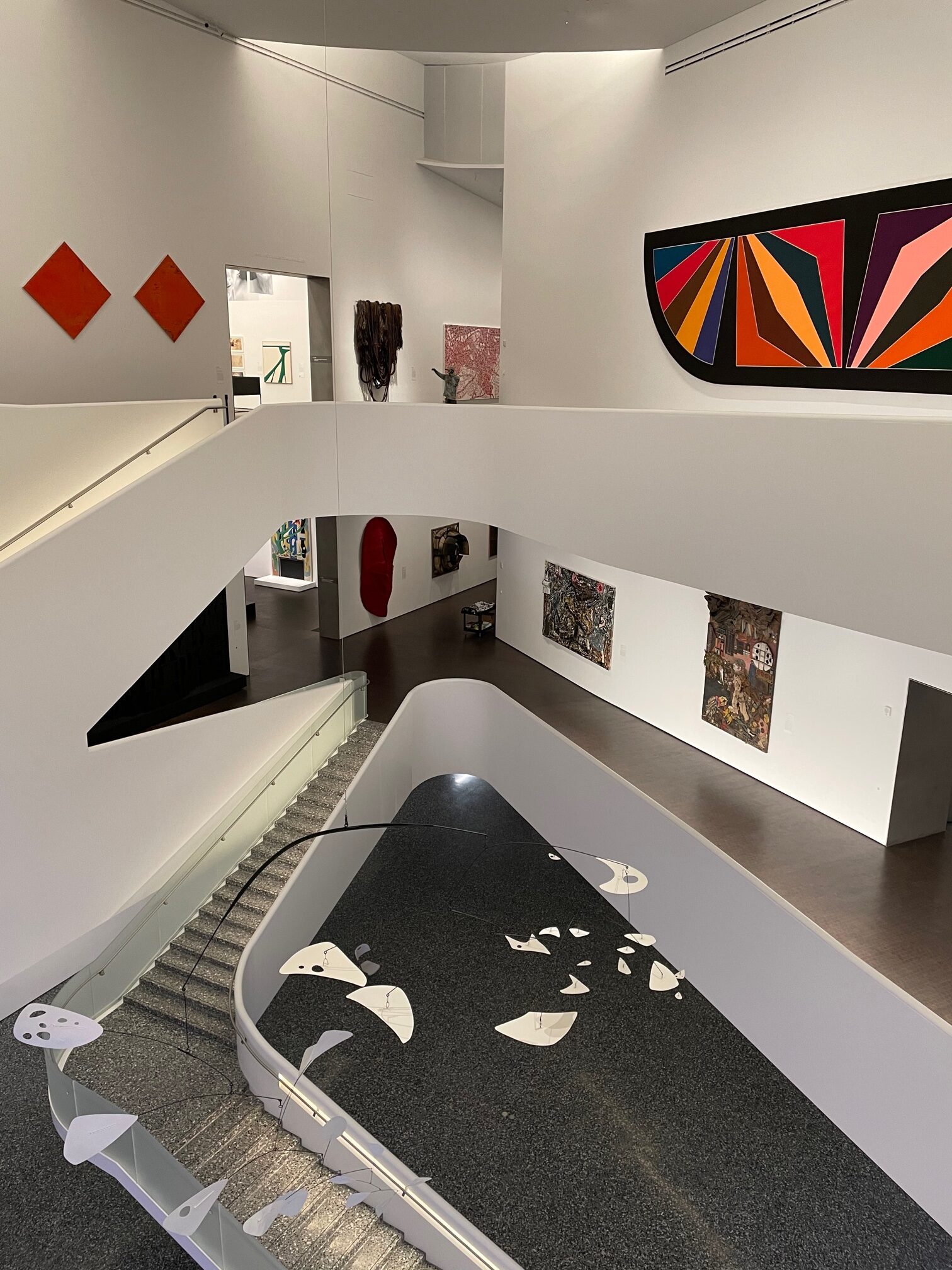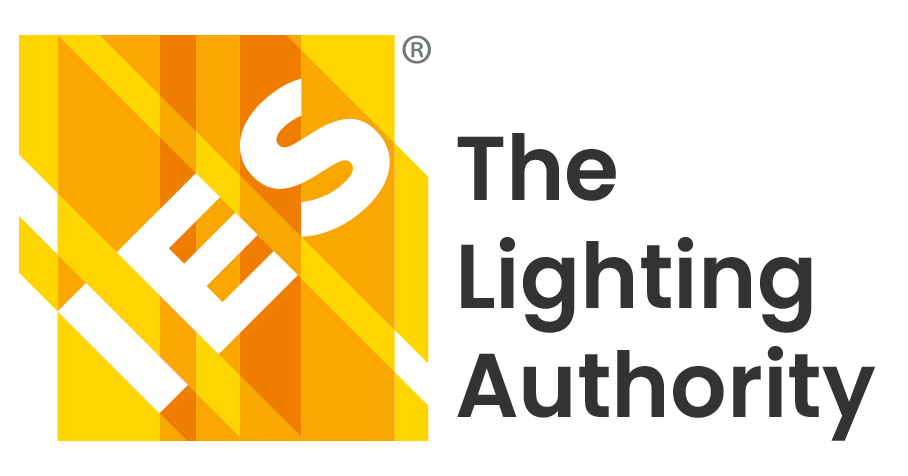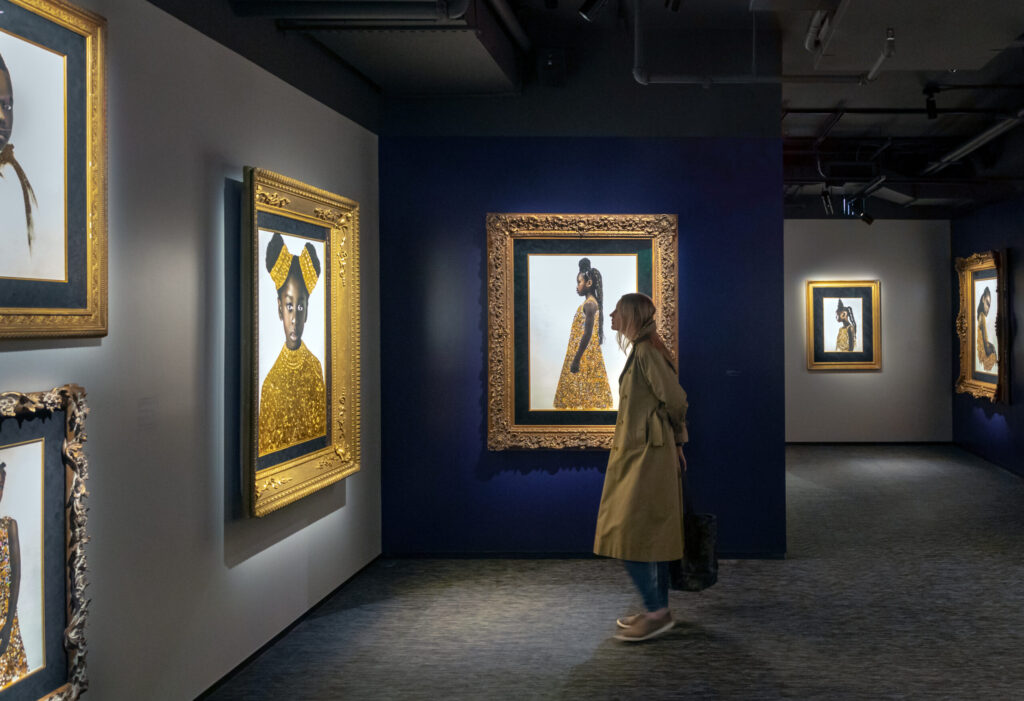Media immersion, flexible controls and more make waves in museums
As a former museum employee who witnessed the start of the pandemic from behind the front desk of a major institution in Manhattan, this LD+A editor wanted to know more about the role of lighting in the chic world of installations on display. Specifically, how this world has shifted in recent years for museum enthusiasts, and for the designers whose job it is to make the in-person museum experience safe, alluring and memorable. We asked one lighting manufacturer representative and five lighting design experts to weigh in on how the visitor experience in museums has changed, and what this means for lighting design. Their responses follow here.

Steven Rosen is principal and creative director of Available Light.
Such a gigantic question! No matter the focus of a particular museum—art, science, culture, history, children’s, etc.—every project is heavily influenced by contemporary life. And what times we have been living! Everything we do as exhibition lighting designers is driven by a myriad of factors including aesthetics, technology and modern society. All those dynamics have been influenced by the long shadow of the pandemic. From exploring the concept of who sits on a board, to rethinking the “typical” visitor, to completely reimagining the many ways one can “attend” and participate in a museum exhibition—institutions have become more cognizant and introspective of both their influence and raison d’etre.
Climate change has also cast its indelible mark on every choice lighting designers make; from a developing awareness of how the products we specify affect our planet, to reducing energy consumption and rethinking the ways we design and communicate. Lessening our carbon footprint is now of major concern.
Exhibition presentation techniques continue to evolve because of this societal upheaval. One of the key transformations I am experiencing is the continued synthesis of lighting and media; the blurring line between these two traditionally discrete disciplines excites me. The ever-increasing granular control of lighting in the museum environment encourages further fusion with media production. The photo I have included is from Greenwood Rising, a new museum commemorating the Tulsa Race Massacre of 1921. In the exhibit experience pictured, museum visitors interact with a virtual Greenwood barber. The line between 3D exhibit, media production and lighting is refreshingly muddled; consequently, visitors are stimulated by a new way of learning and participating.
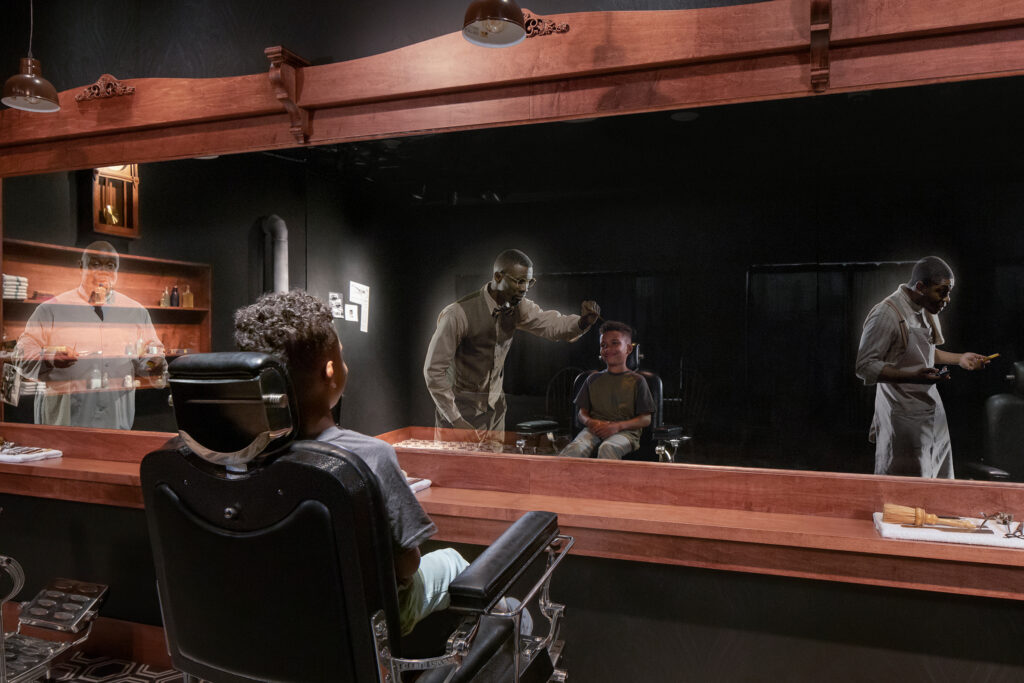

Kaitlin Page is an adjunct professor at Maryville University and the vice chair of the IES Museum and Art Gallery Lighting Committee.
Museums increasingly focus on the visitor experience through event-based activities, highly flexible and temporary installations, partnering with local artists, creating seamless digital integration and expanding public interaction. There is a major shift from more passive curatorial institutions toward places fostering enhanced hands-on learning and inspiration to create deeper connection and memorable experiences. While classic track systems lend well to this, we’re also seeing an increase in RGBW, flexible controls for a variety of scenes, and higher levels of dynamic and interaction-oriented lighting systems.

Scott Rosenfeld is a lighting designer at the Smithsonian American Art Museum and Renwick Gallery.
It’s thrilling to see our galleries [at The Smithsonian American Art Museum and the Renwick] fill with people every day, but I am not sure the visitor experience has changed all that muchin recent years. The technology sure has though—we’re 100% LED now; but the design challenge of using light to tell a story and provide the conditions for people to see—and see well—is the same. I do think lighting contributed to some of our biggest successes in recent years; for example, the “WONDER” and “No Spectators: The Art of Burning Man” exhibits at the Renwick. However, most gallery lighting is subtle, and I think the axiom that design is 99% invisible is especially appropriate to lighting art. It’s interesting to note that my museum recently collaborated with the National Portrait Gallery to develop a new lighting system, and I am excited to see what we can accomplish now that we’ve installed thousands of 4-deg lighting fixtures with sophisticated Bluetooth controls.
Now that I think about it, the most important advance may be our museum’s choice to invest in full-time lighting designers.
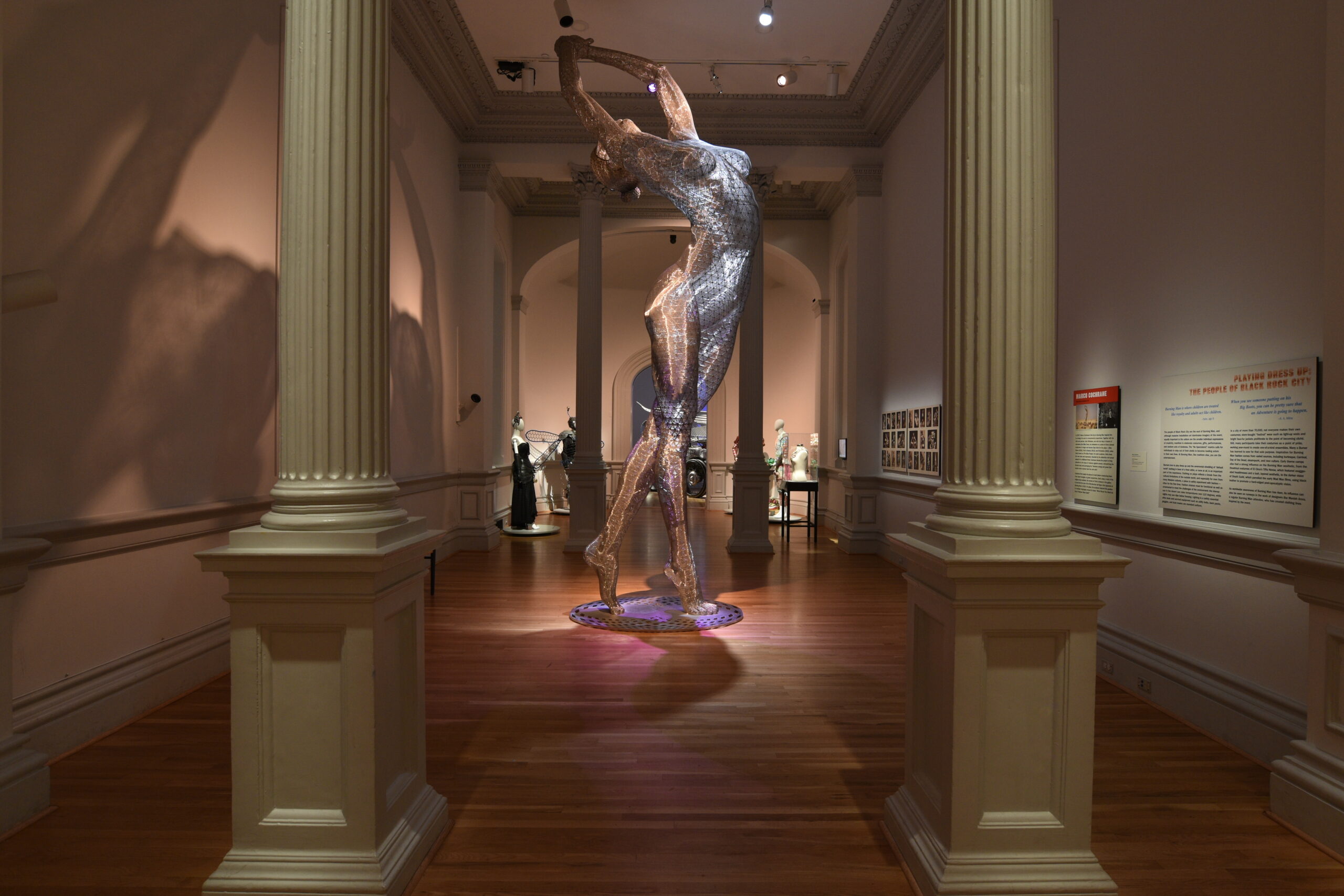

Anita Jorgensen is founder of Anita Jorgensen Lighting Design.
My firm has worked on many museum projects including new construction, major renovations as well as temporary exhibitions. Among the museums we are currently working for are The Morgan Library & Museum, The Frick Collection, the New York Public Library, as well as theIsabella Stewart Gardner Museum, Boston.
I have certainly noticed a change in the presentation of paintings and objects. Museums are increasingly mindful of the diverse nature of their visitors. For example, last year’s remarkable exhibition of Titian’s “poesie,” six Roman and Greek mythological paintings commissioned for Phillip II of Spain, included responses from contemporary writers, poets and artists. These recorded responses helped visitors better relate to ancient mythical scenes.
Lighting technology has changed significantly. New installations are exclusively illuminated by high-quality LED sources. Museums that still use halogen are moving rapidly to convert to integral LED luminaires. We are currently working with the Gardner and The Morgan to upgrade their entire systems to integral LED technology with minimum
CRIs of 97 plus.
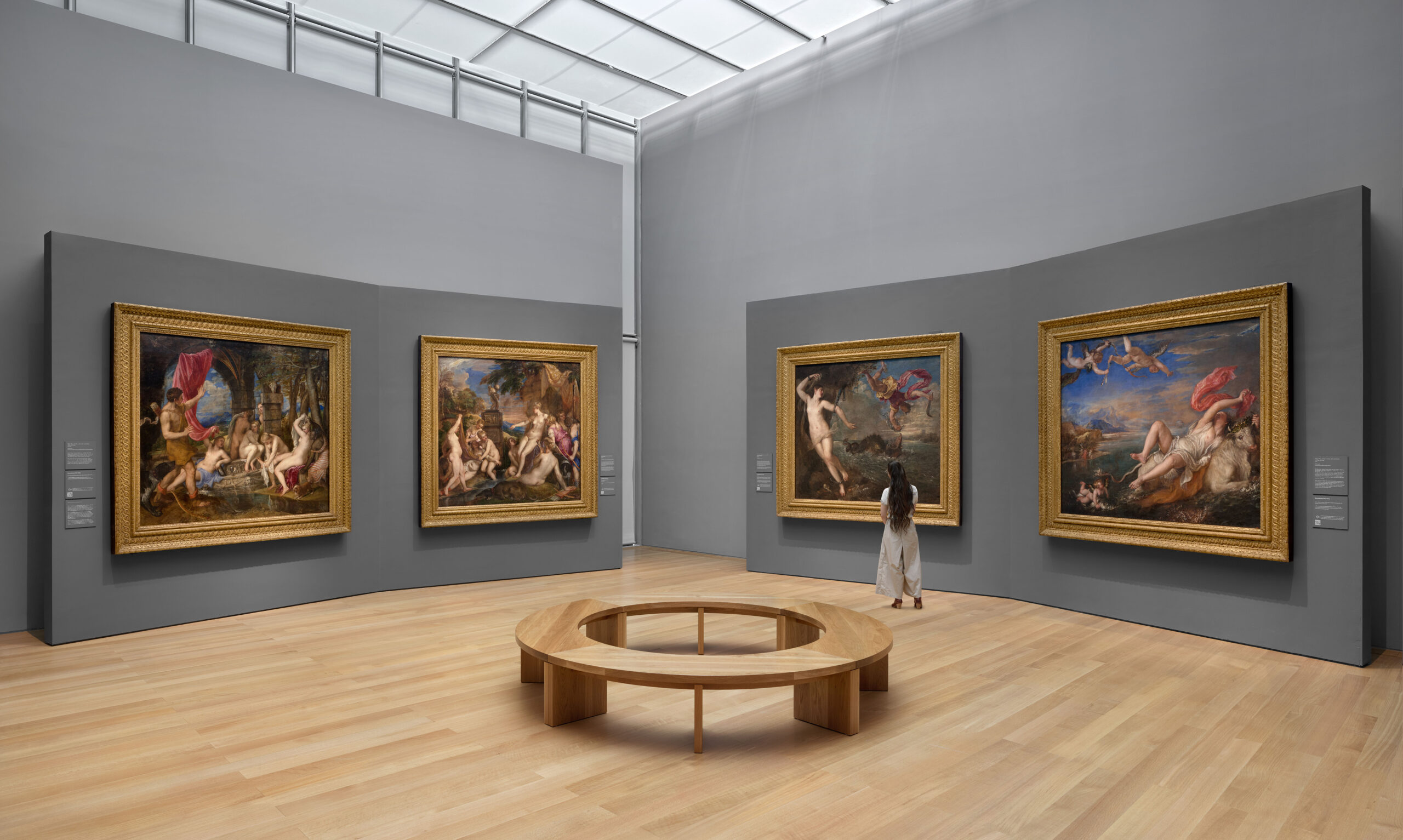

Thomas Mnich is specification sales leader at Lutron and a lighting designer.
In step with the changing times, museums and cultural institutions have had to pivot in response to the pandemic. While many institutions have suffered financial hardships and had to close their doors, others have found new ways to connect with patrons locally and beyond their communities through virtual workshops, talks, tours and presentations. Now that most institutions are again open to in-person visits, museums are using creative tactics to engage with visitors and instill more immersive experiences. In tandem with innovative interiors, using lighting creatively in exhibition design can become a point of differentiation, setting one museum apart from another.
For many institutions, such as Fotografiska which displays large-scale, cutting-edge photography, everything about the environment is tightly controlled. The room’s humidity, temperature and light are set to the perfect level to safeguard pieces and highlight their unique beauty.
A total control system offers lighting designers the flexibility and granular control needed in creating an exceptional visitor experience, protecting artworks, and giving stakeholders occupancy data and insightsto make informed decisions about energy usage.
Fotografiska, for example, prides itself on its collaborative process in working with each photographer to curate deeply personal exhibitions. Lutron’s lighting control system provides the museum with the flexibility to easily shift, creating an environment that constantly feels new and fresh, encouraging guests to return again and again.
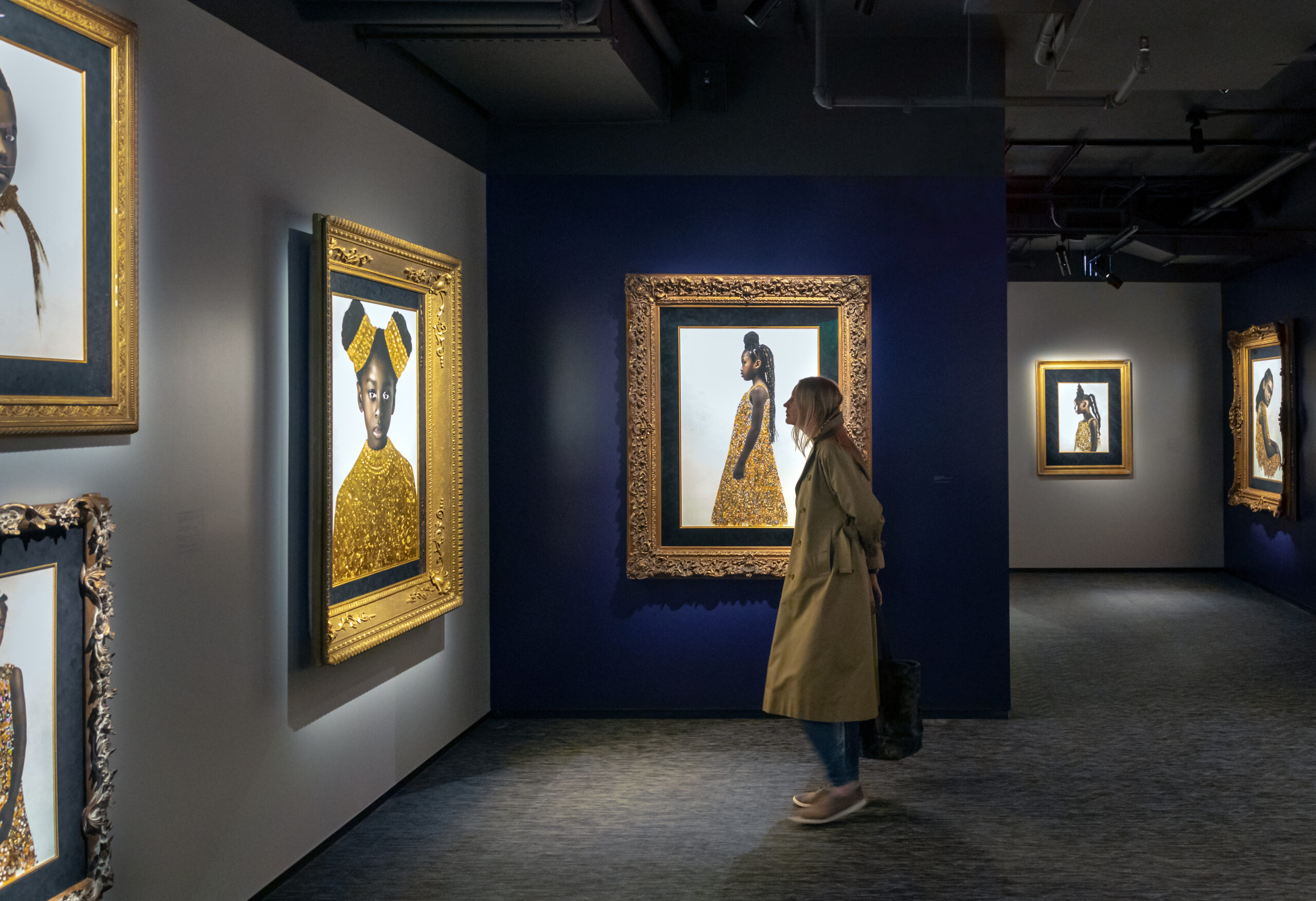

Hervé Descottes is principal and founder of L’Observatoire International.
The integration of light is more important than it used to be. [Museums] are not relying only on track lighting, but integrated light. Designers are using the light to not just highlight the artworks, but also create a real atmosphere in symbiosis with architecture.
